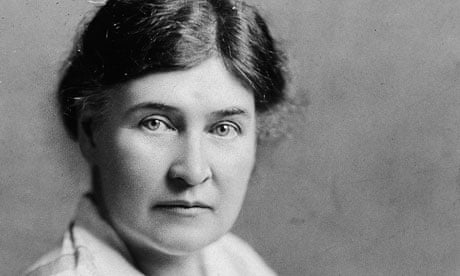In what its editors have admitted is a "flagrant" violation of Willa Cather's wishes, a selection of letters from the much-loved American author are set to be published for the first time next month, more than 65 years after her death in 1947.
Cather, best known today for her novels of early American pioneer life My Ántonia and O Pioneers! and for the acclaimed Death Comes for the Archbishop, forbade the publication of her letters in her will as she hoped to be judged on her work alone. Famously private, she also attempted to destroy all her correspondence. "Just as she wanted no visitors spoiling the places she had loved, so she wanted no tourists inspecting her life," writes Hermione Lee in her biography of the author. But following the death of her nephew and executor Charles Cather in 2011, copyrights passed to the Willa Cather Trust, the publication ban was dropped, and next month Cather scholars Andrew Jewell and Janis Stout will release a collection of 566 of her letters, nearly 20% of the total.
Acknowledging in their preface that the publication "flagrantly" violates Cather's intentions, Jewell and Stout assert that "these lively, illuminating letters will do nothing to damage her reputation", instead showing the author as "a complicated, funny, brilliant, flinty, sensitive, sometimes confounding human being". Cather, Stout told the New York Times, "no longer belongs entirely to herself. She belongs to everyone."
Publisher Knopf said the letters range from "the funny (and mostly mis-spelled) reports of life in Red Cloud in the 1880s that Cather wrote as a teenager" to her final years in the 1940s, when the death of loved ones and the second world war "brought her near to despair".
"They reveal her in her daily life as a woman and writer passionately interested in people, literature, and the arts in general," said the publisher. "The voice heard in these letters is one we already know from her fiction: confident, elegant, detailed, open-hearted, concerned with profound ideas, but also at times funny, sentimental, and sarcastic. Unfiltered as only intimate communication can be, they are also full of small fibs, emotional outbursts, inconsistencies, and the joys and sorrows of the moment."
In early extracts published in the New York Times, Cather is seen writing to Sarah Orne Jewett in 1908, expressing her concerns about a career as an author. At the time, she was working as a journalist, editing the journal McClure's, and she admits that her boss "Mr McClure tells me that he does not think I will ever be able to do much at writing stories, that I am a good executive and I had better let it go at that".
"I sometimes, indeed I very often think that he is right," writes Cather. "If I have been going forward at all in the last five years, [i]t has been progress of the head and not of the hand. At thirty-four one ought to have some sureness in their pen point and some facility in turning out a story. In other matters – things about the office – I can usually do what I set out to do and I can learn by experience, but when it comes to writing I'm a new-born baby every time – always come into it naked and shivery and without any bones. I never learn anything about it at all. I sometimes wonder whether one can possibly be meant to do the thing at which they are more blind and inept and blundering than at anything else in the world …"
Four years later, she would publish her first novel Alexander's Bridge, and in 1913, she published her second novel O Pioneers!, the story of Alexandra Bergson's arrival on the Nebraska prairie, which is still seen by many as her masterpiece.
An earlier letter, written when Cather was 19, in 1893, tells of how she and her brother got stuck at the top of a 50-foot windmill tower as a storm approached. "In a moment the big wind struck us, just such a wind as struck Roscoe and the girls out by the brick kiln, and we fifty feet up in the air on a four-foot platform! Roscoe howled, 'Off with your skirts, Willie or we'll never get down' you bet I peeled them off, all but a little light one," wrote Cather. "The descent was something awful, the tower shook and we shook, the wind hummed and sang and whirled all about us, if it had not been for Rosses [sic] grip on me I believe I should have fallen."
A 1938 letter to her brother extracted in the New York Times expresses her grief at the death of Isabelle McClung, the woman believed to have been the love of her life. "You cannot imagine what her death means to me … No other living person cared as much about my work, through thirty-eight years, as she did," wrote Cather. "As for me, I have cared too much, about people and places – cared too hard. It made me, as a writer. But it will break me in the end … Isabelle watched me every step of the way."

Comments (…)
Sign in or create your Guardian account to join the discussion